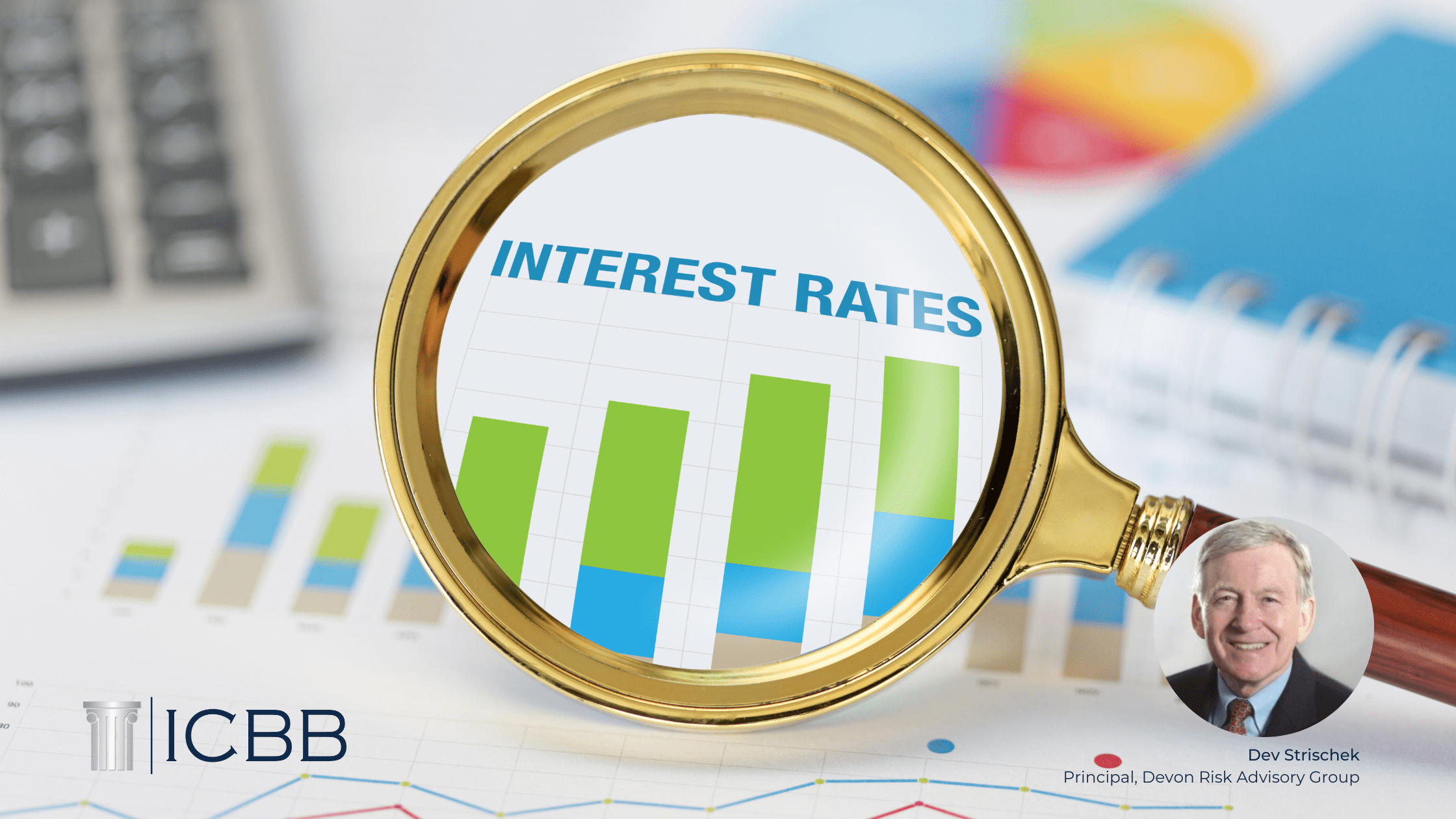For lenders at many community banks, the rising rate environment can be difficult to navigate. At ICBB, we hope to be a resource for community banks in all aspects of their operations. We’ve Dev Strischek, principal at Devon Risk Advisory Group and popular speaker at our Annual Credit Conference, to provide information on risk and lending subjects. In this article, Strischek provides practical advice for lenders on navigating interest rate sensitivity.
Stay Aware– Don’t Get Surprised
Nearly a decade has passed since bankers last saw interest rates rise, and the result has been a long period of low interest rates that have dulled awareness to changes in interest rates, especially among bankers who have less than ten years in the industry. I have seen the disbelief in their smiling faces when I recount the days of 22% prime rates and 16% mortgages. After all, you would have to have been over 40 to have suffered those outrages!
Bankers have extended loans to borrowers who have been able to demonstrate debt service coverage largely because rates have been so low. That means most banks have portfolios of borrowers very vulnerable to rising interest rates. What makes this cycle so dangerous is how quickly rates are rising. Banks relying on annual reviews and annual renewals to gauge their borrowers’ repayment ability are likely to be surprised. In earlier years, we might have tested borrower sensitivity by adding 1 or 2% to the current rates to judge debt service, but the rapid run-up in rates by the Fed is likely to require rate
sensitivity in the 4-5% range. Given today’s shaky economic circumstances, many borrowers may still be struggling to generate a reliable operating cash flow. Bankers might not notice they have a problem if the borrower has a line of credit until the line is fully funded and finally due. Even then, the availability of cheap non-bank credit makes it possible to draw on those accounts temporarily to cover interest on the line of credit or even pay the original line in full. That assumes the lender is enforcing clean-up of the line of credit; in today’s search for earning assets, the lender may choose to leave the line in place or convert it into a time loan just to have an earning asset on the books and renew the line of credit.
Insist on Proof of Repayment Ability
The pandemic has encouraged a mental laxity among some bankers, especially those who muddled through the PPP program where borrowers were given considerable flexibility in providing financial information and lenders were more occupied with processing loans than underwriting them. Proof of repayment ability has become scant in a period where no news is good news has become the monetary mantra. How can you judge debt repayment ability if there are no current financials? Why worry about interest rate sensitivity if rates don’t change or even decline? But what if rates do rise?
Banks often extend long term loans to finance real estate, e.g., office building, warehouse, store, etc., and rising rates diminish real estate values with a double punch. First, rising interest rates reduce the property’s net operating income (NOI) which is usually capitalized by so-called real estate cap rates, which also tend to rise. For example, an office building with an annual $1,000,000 NOI might have been capitalized with a 4% cap rate resulting in a $25,000,000 value. Unfortunately, suppose higher interest rates reduce the NOI to $900,000 and boost the cap rate to 5% resulting in an $18,000,000 value. A bank that made an 80% LTV loan on the $25MM value would find its $20MM loan under water.
Guard Your Margins
Finally, it is time to revive the use of debt service coverage ratios that compare the global cash flows from borrowers and guarantors to their proposed and existing principal repayment and interest expense. It is time to adjust the interest rate expense projected to current and future interest rate expense. Remember, rising interest rates for borrowers also means rising cost of funds for bankers. Guard your margins and do your homework.
 Dev Strischek is an experienced banking and financial executive continuing to put into practice sound risk management principles. He currently serves as Principal for the Devon Risk Advisory Group, LLC, as well as on the Risk Management Association advisory board; the Professional Risk Managers’ International Association Atlanta chapter board; and the American Bankers’ Association member advisory board.
Dev Strischek is an experienced banking and financial executive continuing to put into practice sound risk management principles. He currently serves as Principal for the Devon Risk Advisory Group, LLC, as well as on the Risk Management Association advisory board; the Professional Risk Managers’ International Association Atlanta chapter board; and the American Bankers’ Association member advisory board.

